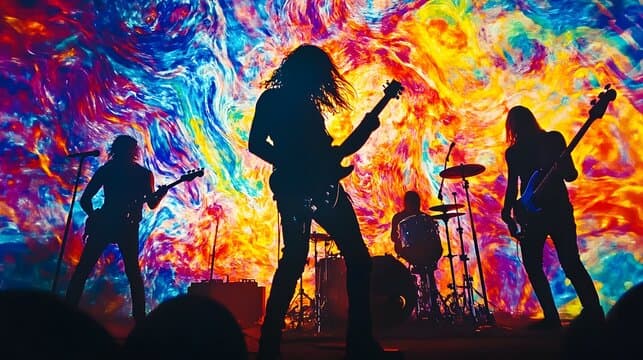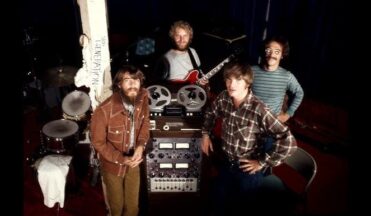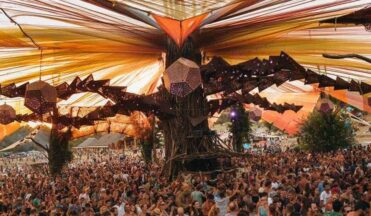Artistic trends, much like fashion waves, move in spirals. What once sounded like musical protest or street improvisation is now returning to the spotlight—with shades of nostalgia, technological sophistication, and new interpretations. Psychedelic and garage rock, genres that flourished in the 1960s–70s, are experiencing a rebirth at festivals across Europe, including Hungary. Their raw energy, dense guitar riffs, and psychoacoustic experiments once again draw crowds—from classic rock fans to young listeners discovering the sound of analog synthesizers and overdriven tube amps for the first time.
Origins of the Genres and Their Path to Revival
Psychedelic rock was born in an era of revolutions and experimentation, where music became a space for mental journeys. It absorbed elements of Eastern philosophy, acid visuals, and a desire to push beyond the boundaries of ordinary perception. Garage rock, by contrast, was straightforward and streetwise—music played by teenagers in basements with minimal gear but maximum sincerity. What united them was a rebellion against standardized sound and a thirst for self-expression.
Today, with digital sound as the norm, many people are reaching back to live performance and analog tone as markers of authenticity. It is at festivals—where the atmosphere breaks free from radio formats and streaming playlists—that psychedelic and garage rock find new life. In Hungary, this trend is especially visible at events like the Kolorádó Festival or Fishing on Orfű, where young bands cite The Doors, Jefferson Airplane, and The Sonics as influences, blending the classics with modern sound design.
Modern Festivals as a Stage for a New Generation
Summer festival stages have become places not only of musical revival but also of visual art, light installations, and interactive performances. Psychedelic rock—with its leanings toward synesthesia and visual trips—fits seamlessly into these contexts. Young Hungarian bands like Middlemist Red or Deep Glaze use vintage synths and effects pedals to create hypnotic compositions that could easily have been pressed onto vinyl in 1971. At the same time, they are fully immersed in digital culture, unafraid to incorporate video art, glitch graphics, and AI-generated visuals into their shows.
Festivals have become a place where the old and new merge. Here, one can hear covers of Roky Erickson while watching psychedelic visuals controlled in real-time by neural networks. In a world where typical forms of entertainment are increasingly digital—whether video games or virtual amusements like Kaszino Magyar—it is the live performances that restore the sensual perception of music, the physicality, and the collective experience often lacking in virtual space.
Why This Matters for Culture and Listeners
The revival of these genres is more than a trend. It is a cultural statement. In an age of quick solutions, short attention spans, and commercial pop, psychedelic and garage rock redirect attention toward depth, to imperfect but vibrant sound, to empathy and experimentation. Their live performances allow the listener not just to passively consume content but to be involved, to experience the music in the present moment.
For the Hungarian scene, this is especially significant: a local style is emerging that blends Western heritage with Eastern European melancholy, grit, and sometimes irony. Modern bands draw inspiration not only from The Velvet Underground but also from Hungarian classics like Omega and Locomotiv GT, creating a sound that cannot be replicated by a neural network or a Spotify algorithm.
New Opportunities for Artists and Fans
Today’s festivals are more than just stages and audiences. They are platforms for exchange: musicians test new material, audiences discover fresh meanings, brands launch collaborations, and curators unveil unexpected talents. The revived interest in psychedelia and garage rock has opened doors for many young performers who, in another context, might have gone unnoticed.
Many independent labels, such as the Budapest-based Move Gently Records, focus precisely on these genres. They support artists, release vinyl, organize mini-festivals, and stimulate the local music scene. All of this creates fertile ground for the development of non-commercial music, where what matters is not likes but genuine connection between artist and audience.
Conclusion — Music Beyond Time
Psychedelic and garage rock are not nostalgia for a bygone era. They are a manifesto that music can be sincere, unpredictable, and alive. Their return to festival stages across Europe and Hungary proves that listeners are tired of templates and are seeking an experience they can fully immerse themselves in—through sound and atmosphere.
In an era where entertainment often comes at the click of a button, the renewed interest in these genres is a reminder of the importance of physical presence, noise, imperfection, and expression. And if you hear, in the night, the hum of a tube amp and a voice pulling you deep into your consciousness—it means rock is back.


